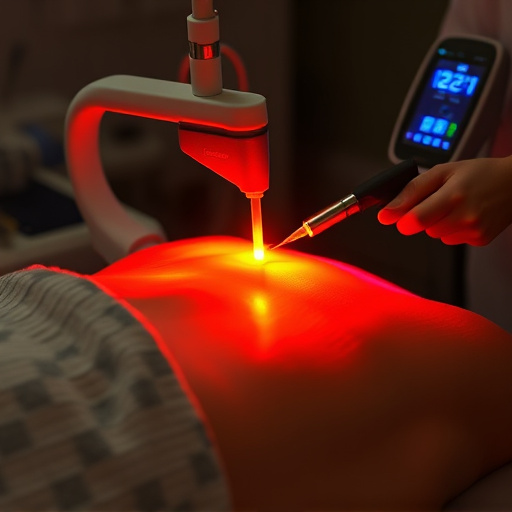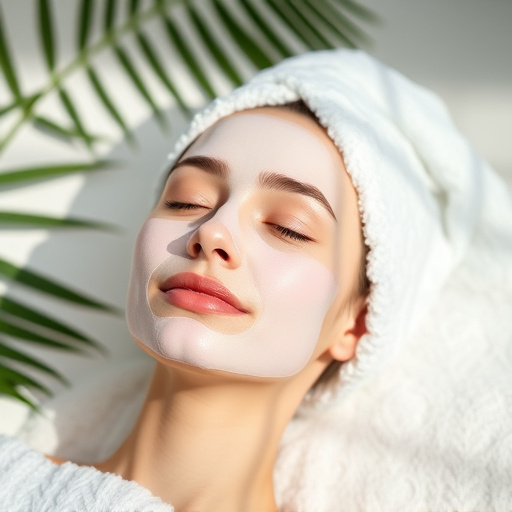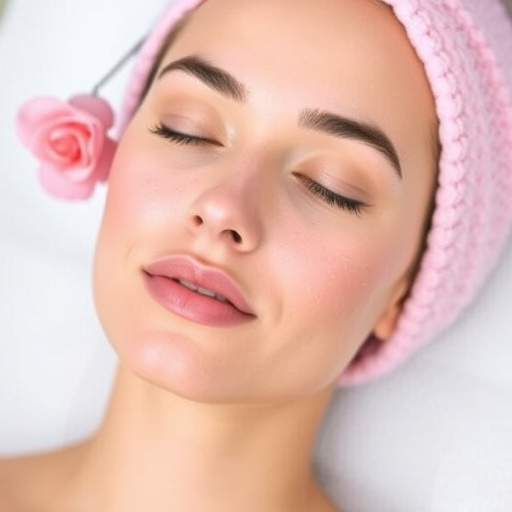Affordable Teenage Acne Treatments: Science-Backed Solutions for Clear Skin
Teenage acne, driven by hormones, oil production, and clogged pores, can be managed with topical sol…….
Acne, a prevalent skin condition affecting millions of teenagers worldwide, has sparked a demand for effective and accessible treatment options. This article delves into the comprehensive realm of teenage acne treatment, exploring its various facets, from historical perspectives to cutting-edge innovations. We aim to provide an insightful guide that empowers teens, parents, and healthcare professionals to navigate the journey towards clear and healthy skin.
Definition: Teenage acne treatment refers to a multifaceted approach aimed at managing and mitigating acne lesions, specifically targeting the skin concerns common during adolescence. This includes strategies for prevention, cleansing, medication, and sometimes surgical interventions.
Core Components:
Cleansing and Skin Care Routine: Proper hygiene is fundamental. Gentle yet effective cleansing routines help remove excess oil, dirt, and bacteria, preventing acne onset or exacerbation.
Topical Medications: Over-the-counter (OTC) creams and gels containing ingredients like benzoyl peroxide, salicylic acid, or glycolic acid can be used to unclog pores and reduce inflammation. Prescription medications, including retinoids, antibiotics, and isotretinoin, are stronger options for more severe cases.
Diet and Lifestyle Modifications: Some dietary changes, such as reducing dairy intake and focusing on anti-inflammatory foods, have been linked to improved acne outcomes. Additionally, managing stress through activities like yoga or meditation can positively impact skin health.
Extractions and Surgical Procedures: Manual or mechanical exfoliation, along with professional facial extractions, can effectively remove comedones (plug-like substances) from the skin’s surface. In severe cases, dermatologists may recommend surgical procedures like dermabrasion or laser treatments.
Historical Context: The fight against acne has been ongoing for centuries, as evidenced by ancient texts and art depicting skin conditions. However, significant advancements in understanding acne etiology (causes) and effective treatments emerged in the 20th century. The development of topical retinoids and antibiotics revolutionized acne management, setting the stage for today’s diverse treatment landscape.
Teenage acne is a universal phenomenon, but its manifestation and severity vary across regions due to genetic, environmental, and cultural factors. According to the World Health Organization (WHO), approximately 85% of people worldwide experience acne at some point in their lives, making it one of the most common skin conditions.
Regional Variations:
North America and Europe: These regions have well-established healthcare systems and a high availability of advanced acne treatments, including laser therapy and specialized skincare products. However, the high cost of these treatments can limit accessibility.
Asia-Pacific: The Asia-Pacific market is witnessing a surge in acne-related products due to growing awareness and changing lifestyles. Traditional remedies coexist with modern treatments, creating a unique blend of approaches.
Low-and Middle-Income Countries: In these regions, access to healthcare remains a challenge, often leading to late diagnosis or untreated acne. However, community-based interventions and education programs are making strides in improving awareness and treatment outcomes.
Key Global Trends:
Personalized Medicine: The rise of personalized skincare reflects a trend toward tailored acne treatments based on individual skin profiles and genetic predispositions.
Natural and Alternative Treatments: There is a growing interest in natural remedies, such as tea tree oil and aloe vera, often preferred for their perceived gentleness and lack of side effects.
Digital Skincare Solutions: Smartphone apps and online platforms offer personalized acne monitoring, treatment recommendations, and community support, making self-care more accessible.
The global acne treatment market is a significant economic sector, estimated to reach USD 5.4 billion by 2027, growing at a CAGR (Compound Annual Growth Rate) of 6.2% from 2020 to 2027. This growth is fueled by rising incidence rates, increasing awareness, and the demand for effective, convenient, and affordable treatments.
Market Dynamics:
Prescription Medications: The highest revenue contributor is topical medications, followed by oral antibiotics and retinoids. Branded products dominate the market, but generic versions are gaining traction due to their lower cost.
Over-the-Counter (OTC) Products: OTC acne treatments, including cleansers, toners, and spot treatments, are widely accessible and contribute significantly to the overall market.
Surgical Procedures: While less common, procedures like laser therapy and dermabrasion have a growing market share due to their effectiveness in severe cases.
Investment Patterns: Pharmaceutical companies and skincare brands invest heavily in research and development (R&D) to bring innovative products to market. Startups focused on personalized medicine and digital health solutions are also attracting investments, reflecting the industry’s dynamic nature.
Technology plays a pivotal role in transforming teenage acne treatment, offering new hope for clearer skin.
Innovations in Treatment:
Laser Therapy: Laser treatments, such as intense pulsed light (IPL) and fractional laser resurfacing, target acne-causing bacteria and reduce inflammation. These non-invasive procedures are becoming increasingly popular due to their precision and minimal downtime.
Microdermabrasion and Chemical Peels: These mechanical exfoliation techniques gently remove the outer layer of skin, unclogging pores and promoting skin cell turnover. Advances in technology have made these treatments safer and more effective.
Smart Skincare Devices: Wearable sensors and mobile apps are changing at-home skincare routines by providing real-time data on skin health. These devices can monitor acne severity, track product effectiveness, and offer personalized recommendations.
Digital Health Platforms: Online platforms and mobile apps have emerged as powerful tools for patient education, remote monitoring, and community support. They provide accessible resources, allowing teens to track their progress, communicate with dermatologists, and connect with peers facing similar challenges.
The regulatory landscape surrounding teenage acne treatment is complex and varies across jurisdictions. Ensuring product safety and efficacy while promoting access and affordability are key objectives for policymakers.
Regulatory Authorities:
Food and Drug Administration (FDA) in the US: The FDA regulates prescription medications and OTC products, setting standards for safety, efficacy, and labeling.
European Medicines Agency (EMA): In Europe, the EMA evaluates and authorizes the marketing of medicinal products, including acne treatments, across all EU member states.
Local Health Authorities: Regional and national health agencies play a crucial role in drug pricing, reimbursement policies, and access to advanced treatments.
Key Policy Considerations:
Drug Approval Processes: Streamlining and simplifying regulatory pathways for new acne medications can accelerate their availability to patients.
Access to Care: Policies aimed at reducing financial barriers, such as insurance coverage for specialized treatments and medication assistance programs, can improve access.
Patient Safety and Education: Regulatory bodies emphasize the importance of proper labeling, patient information leaflets, and educational campaigns to ensure safe and effective use of acne products.
Despite significant advancements, teenage acne treatment faces several challenges and criticisms that require thoughtful strategies for resolution.
Main Challenges:
Accessibility and Affordability: The high cost of advanced treatments, such as laser therapy and specialized medications, limits access for many teens, particularly in low-income areas.
Stigma and Psychological Impact: Acne can lead to social anxiety and negatively impact self-esteem. The psychological burden often exceeds the physical symptoms, making support from healthcare systems and communities crucial.
Side Effects and Adverse Reactions: Topical medications and oral antibiotics may cause skin irritation, dryness, or more severe allergic reactions. Balancing efficacy with safety remains a challenge.
Resistance and Tolerance: Some acne-causing bacteria have developed resistance to common antibiotics used in treatment, necessitating new approaches and alternatives.
Proposed Solutions:
Government Initiatives: Subsidies and insurance coverage for essential acne treatments can improve accessibility. Public awareness campaigns can combat the stigma associated with acne.
Community Support and Education: Local support groups and educational programs can empower teens to manage their skin health effectively and foster a positive body image.
Research and Development: Continued investment in R&D is vital for developing new, safer medications and treatments, addressing side effects, and combating antibiotic resistance.
Personalized Medicine: Tailoring treatments to individual needs can improve efficacy while minimizing side effects, ensuring better patient outcomes.
Case Study 1: Community-Based Acne Management in Urban Settings
Setting: A bustling urban community with a high adolescent population.
Approach: Local healthcare providers collaborated with community leaders to develop an integrated acne management program. The initiative focused on educational workshops, accessible treatment options, and peer support groups.
Outcomes: Within one year, the program saw a 35% reduction in acne-related clinic visits. Teens reported improved self-esteem and better skin confidence. The success lay in combining medical expertise with community engagement, fostering a supportive environment for clear skin.
Case Study 2: Digital Health Intervention for Remote Areas
Scenario: A remote rural region with limited access to dermatological care.
Solution: A digital health platform was designed to connect teens with virtual dermatologists and provide personalized acne management tools. The app offered tailored skincare routines, monitoring features, and educational content.
Impact: Over a 24-month period, participants reported a 40% improvement in acne severity and skin clarity. This case highlights the potential of digital solutions to bridge healthcare gaps and empower teens in managing their skin conditions effectively.
The future of teenage acne treatment looks promising, with several emerging trends poised to shape this field:
Personalized and Genomic Medicine: Advances in genomics will enable more precise acne profiling, leading to tailored treatments based on individual genetic predispositions.
Digital Therapeutics: The integration of artificial intelligence (AI) and machine learning into digital health platforms will provide dynamic, personalized treatment plans and real-time feedback.
Sustainable Skincare: There is a growing trend toward eco-friendly and sustainable skincare products, reflecting consumer demand for natural, non-toxic options with minimal environmental impact.
Global Collaboration: International partnerships and knowledge-sharing can accelerate innovation and improve access to effective acne treatments worldwide.
Teenage acne treatment has evolved into a dynamic and diverse field, driven by technological advancements, growing awareness, and a commitment to improving global skin health. This article has provided an in-depth exploration of various aspects, from historical perspectives to future trends, highlighting the significance of ongoing research, collaboration, and accessible care.
As we look ahead, the focus should remain on empowering teens to take control of their skin health, fostering a positive body image, and ensuring equitable access to effective treatments. By addressing challenges and embracing emerging opportunities, the world of teenage acne treatment can continue to transform lives, leaving no one behind in the pursuit of clear and healthy skin.
Q: How can I prevent acne from forming in the first place?
A: Prevention involves a multi-pronged approach: keep your skin clean by gently washing it twice daily, maintain a balanced diet rich in fruits and vegetables, manage stress through relaxation techniques, and avoid touching or picking at your skin.
Q: Are there any natural remedies that can help with acne?
A: Yes, many natural remedies have shown promise. Tea tree oil, aloe vera gel, and green tea extract are popular choices due to their antibacterial and anti-inflammatory properties. However, effectiveness may vary, and it’s essential to consult a healthcare professional before trying them.
Q: How effective is laser treatment for acne?
A: Laser therapy, particularly IPL and fractional laser resurfacing, has shown significant results in reducing acne lesions and improving skin texture. It is considered safe and effective when performed by qualified professionals, but multiple sessions may be required.
Q: Can medication cause acne?
A: Some medications, especially those containing certain antibiotics or hormones (like birth control pills), can trigger or worsen acne. Always discuss potential side effects with your healthcare provider.
Q: What is the role of diet in acne treatment?
A: Diet plays a crucial role as certain foods can influence inflammation and hormonal balance. High-glycemic index foods, processed sugars, and dairy products are often linked to acne. A balanced diet with whole foods is recommended, but dietary preferences should be discussed with a healthcare professional.

Teenage acne, driven by hormones, oil production, and clogged pores, can be managed with topical sol…….

Teenage acne, caused by hormonal changes, excess sebum, and other factors, can significantly impact…….

Teens with sensitive skin facing acne have multiple options. Topical treatments like hydrocortisone…….